Thematic Area 1: Polarimetric and Multi-frequency SAR Applications
Thematic Area 1 (TA-1) covers applications such as forestry, agriculture, wetland and other land uses (i.e. the IPCC “AFOLU” themes), plus others relating to ocean and sea ice. The group focuses on polarimetric and multi-frequency SAR applications, with the main measurements being polarimetric or multi-frequency backscatter intensity and/or polarimetric phase. InSAR is often cited as useful, but is not the main driver.

Early season crop classification, using RADARSAT-2 and TerraSAR-X (90% accuracy), provided by H. McNairn
Session organisers:
- Ake Rosenqvist (JAXA)
- Klaus Scipal (ESA)
Formed for the second workshop hosted by ESA in 2022, TA-1 covers three primary themes: forest, wetlands & biomass; agriculture & soli moisture; and ocean & sea ice. The ESA workshop saw presentations and discussions on each of these topics, resulting in a series of cross-cutting recommendations. The presentations included:
- Virtual Constellations to Monitor Agriculture, by Dr. Heather McNairn of Agriculture and Agri-Food Canada
- Forest, Wetlands & Biomass, by Maurizio Santoro of Gamma Remote Sensing
- Sea Ice & Ocean, by Malin Johansson & Wolfgang Dierking of UiT, The Arctic University of Norway
The summary presentation can be found here. Recommendations include the following:
Foster Operational Applications
- High potential of Full-Pol and Multifrequency data that today is still under-explored.
- Continuity (sensor characteristics) and Homogeneity (in global coverage) are critically important for operational applications. Be boring rather than innovative.
- Free and openly accessible products stimulate applications (preferably standardised ARD products).
- For dynamic processes (agriculture, sea ice, …) acquire multifrequency data temporally coincident.
Foster Research and Development
- Conduct coordinated tower and airborne campaigns collecting multi-frequency and multi- polarisation data to support studies into the information content of multidimensional SAR data.
- Define core site (forest, agriculture, wetland, ice,…) where Agencies AND Commercial providers systematically collect SAR data and make those data openly available.
- Support the development of Open Source toolboxes for advanced SAR processing both optimised for “operational” applications (e.g. SNAP) and as learning tools (e.g. Python notebooks).
- There is a need for a coordinated data catalog.


